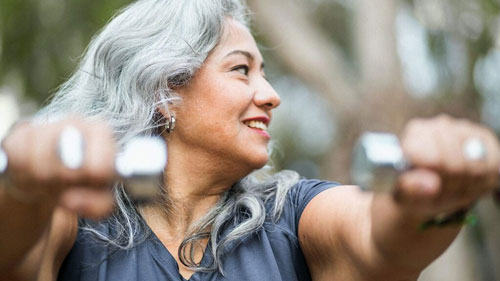A study found that in both males and females, higher muscle mass was associated with lower mortality from cardiovascular disease (CVD).
Higher body fat was also associated with lower CVD mortality risk in females but not in males.
The researchers claim that in females, building muscle mass may be more important than losing weight for cardiovascular health.
The researchers behind the study note that over the past 50 years, death rates from CVD have fallen in both males and females in the United States.
However, the rate of decline has been slower among females than males, and the rate of heart attacks in females aged 35–54 years is actually increasing.
In addition, research suggests that even though females have a lower incidence of CVD than males, they have a higher mortality rate and worse prognosis after an acute cardiovascular event.
As CVD seems to affect the sexes differently, there is an urgent need to determine whether doctors should offer different advice about prevention to their male and female patients.
A new study by researchers at the University of California, Los Angeles, suggests that the focus for females should be on maintaining or increasing muscle mass rather than losing fat.
The researchers analyzed body composition data from the National Health and Nutrition Examination Survey (NHANES) 1999–2004 and CVD mortality data from NHANES 1999–2014.
The data came from a total of 5,627 females and 5,836 males, all aged over 20 years.
Based on the data, the researchers split the study participants into four groups:
However, after accounting for other factors that are known to affect CVD mortality, the relationship between body fat and the risk of dying from CVD changed completely in females.
After making these adjustments, the researchers found that females with high body fat and high muscle mass had a 42% lower risk of dying from CVD compared with females who had a low muscle mass and low body fat.
By contrast, males with high muscle mass and high body fat had a 26% reduced risk of dying from CVD compared with males with low measurements, while those with high muscle mass and low body fat had a 60% decreased risk.










